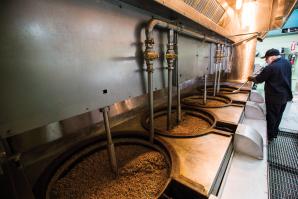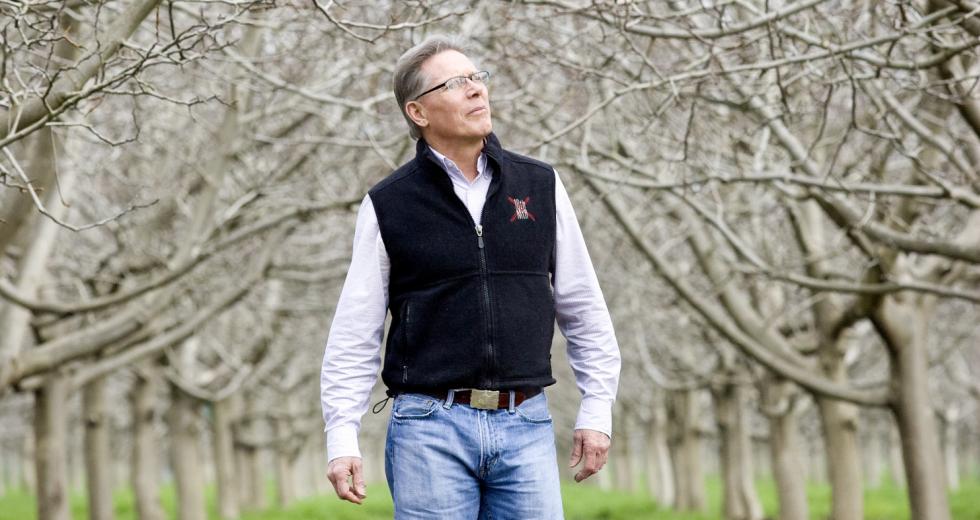How many farmers can say they spent their childhood bowling at Camp David or playing football with the Kennedy clan on the White House lawn? It’s the path Craig McNamara, 60, has taken from Washington, D.C., to his 450-acre organic walnut farm, and, at times, it was torturous.
He was 10 years old when his father, Robert, accepted President Kennedy’s offer to become the secretary of defense, thrusting the family into the seemingly ideal world of “Camelot.”
But it didn’t last. Over the next eight years, the elder McNamara, along with Kennedy’s successor, President Lyndon Johnson, became synonymous with Vietnam, dubbed by some as “McNamara’s War.” As protests against the war grew, it seemed the whole country was coming apart at times.
Things were also not great for Craig, who vehemently disagreed with his father about the war. At 20, he left college and entered the draft. It might seem crazy to give up a chance to escape an unpopular war he strongly opposed, but McNamara says the decision was simple.
“How could I take a deferment when so many of my peers were going off to fight?” he says.
When the draft board called, he dutifully reported. But the stress of conflict had already produced permanent family wounds. Both Craig and his mother, Margaret, had developed severe stomach ulcers, Craig’s when he was just 17. Military service was out.
With no interest in returning to school, McNamara left for Central America, where he became involved in agriculture. Although his parents were dedicated urbanites, he says, they passed to him an abiding love for gardening. While it was a large leap from helping tend the family garden to working production row crops, McNamara was smitten.
For the next few years he worked on farms in places like Chile before returning to the U.S. in 1974. With his newfound zeal, McNamara finished a degree in plant science at UC Davis, eventually starting his own farm, Sierra Orchards, in 1980.
These days, when not tending his walnut trees, McNamara devotes his time to the Center for Land-Based Learning, a nonprofit he started in 1993 to help young people learn about sustainable agriculture and good environmental stewardship.
Mary Kimball, the center’s executive director, says that effort, which started with a handful of students from a few Sacramento and Yolo County schools, now includes a yearlong program that serves more than 1,000 high school students across 13 counties. The center recently received a $100,000 federal grant to fund an internship program that will focus on green jobs in agriculture.
Keeping all of this going, however, hasn’t been easy. Kimball says the program costs $25,000 annually to run, funds which have been harder to come by as the economy has tanked. Some programs based in Southern California have even failed. Although the program has traditionally been free to students, they now must pay
$50 a year. Even so, Kimball says enthusiasm remains high.
“The kids and their parents really appreciate the value of this program,” Kimball says.
McNamara has also become a staunch advocate for water
conservation. Like most farmers, he is loath to waste anything,
particularly the water he gleans from Putah Creek, which runs
adjacent to his land.
“My goal is that no water leaves this property,” he says.
McNamara has had to make several major concessions to make that happen, including giving up two-and-a-half precious acres to install a tail pond that collects runoff from his fields. The pond captures silt that would otherwise end up back in the creek, thus providing him with an abundance of super-rich topsoil. He is also steadily moving all of his irrigation from flood to a more efficient buried drip system.
“If you can direct water to the crop instead of weeds, you save a lot of money,” he says.
Getting there, however, requires a significant financial investment. He has been able to ease the hit by taking advantage of federal matching funds that help pay for the upgrades. But McNamara has also given up another four acres that butt up against Putah Creek to rebuild a riparian area that serves as native plant and animal habitat as well as erosion control for his orchard. It too was not cheap — the land is worth around $1,500 per acre, plus whatever annual yield he would have garnered from planting on it — but he says the environmental return is almost incalculable.
“These efforts are very important to the long-term health of our watershed,” he says.
McNamara says his efforts are not unusual for farmers in this day and age, even though most are portrayed as water wasters.
“It is a misconception that ag is behind the curve,” he says, though he concedes that “farmers have not done a good job of listening” to their critics or helping those outside the agriculture community understand their needs.
Even with the struggles, McNamara says he remains optimistic about farming’s future. He also notes that in spite of their differences, he and his father, who died in 2009, ended up on good terms. It was helpful, he says, that the elder McNamara spent the last years of his life talking openly about the war, something that helped the son come to grips with that time in his life as well.
“In the end,” McNamara says, “no family ever really escapes complications.”
Recommended For You

Striking Oil
In Woodland, La Tourangelle cracks the nut oil market
Pulling up to the bland business park that is home to La Tourangelle’s nut oil bottling facility gives no indication of the nexus of culinary artistry housed inside.
But step through the doors and start talking to Matthieu Kohlmeyer, the energetic founder and CEO of the Woodland company, and you’ll discover that this quiet farming town is home to a vibrant French connection and a business that’s ridden the wave of consumer health trends and successfully plugged into the farm-to-fork movement.

Winters’ Preservation
Age-old recipes make for new-era growth
Tucked in a quiet corner of western Yolo County, Winters embraces the soul of small-town living. Centered around a historic downtown complete with white gazebo and an oversized main street clock, this tiny farm town (population 6,624) is on the cusp of a burgeoning new food scene.



